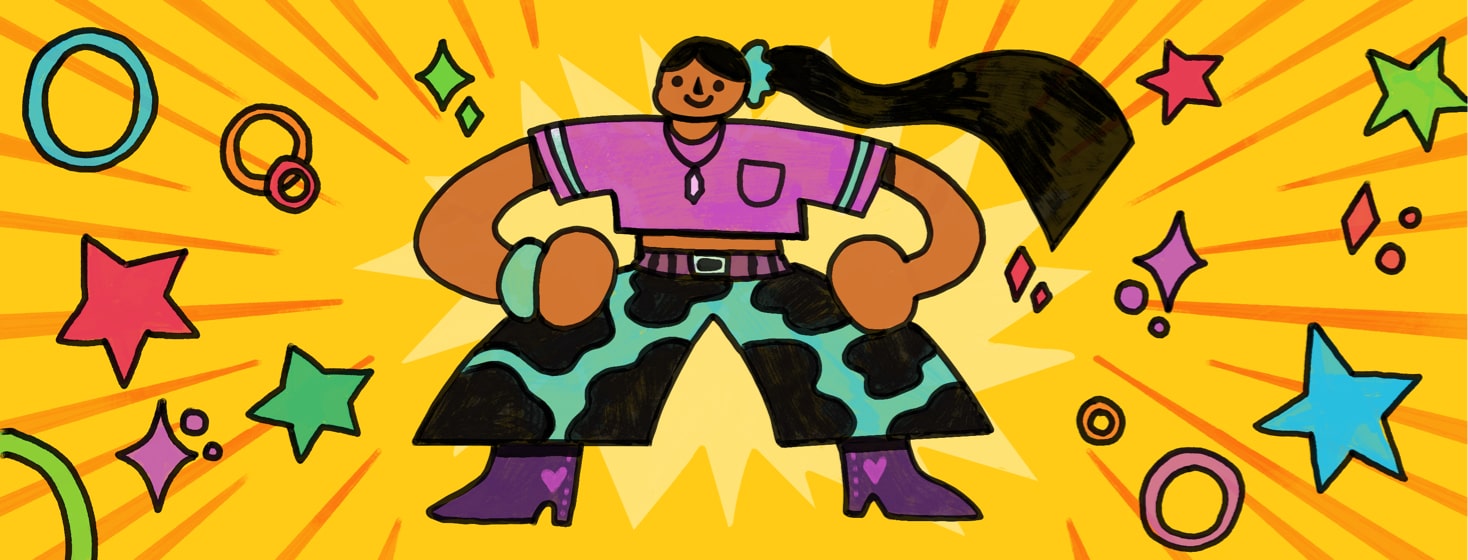What Is Power Posing?
Striking a “power pose” means taking up a lot of space with your body – standing upright with great posture, legs wide, hands on hips, chin raised to the sky. But a power pose is not just a way to look like Superman or Wonder Woman. Power posing can have a significant impact on your emotions and mood.1
Power posing is a universal expression of power. And according to several studies, the straighter a person stands, the more powerful they may feel. Researchers believe that even quick, fleeting feelings of confidence and power through power posing can have a lasting impact on a person’s life and influence their perception of emotion.1,2
Asthma and power posing
Some research has explored how power posing may be a coping tool for people living with chronic conditions like asthma. For instance, can power postures help influence a person’s perception of their asthma symptoms, helping to alleviate them?
Furthermore, can power posing improve a person’s self-reflection and mood to the extent of managing or minimizing fatigue and pain? These questions are currently still up for debate.
The posture-mind connection
There is no doubt that there is a connection between body and mind. After all, our bodies have the ability to influence our brains, and vice versa.3
Some scientists believe there are clear emotional benefits of good posture. For instance, the way a person holds themselves and their body has the potential to impact their self-reflection and mood.1-3
A 2015 study randomly assigned 74 people to take either a slumped posture or an upright posture while performing several reading and speech tasks. They looked at mood, self-esteem, perceived threat, as well as heart rate and blood pressure.4
Researchers found that those who were seated upright felt more positive emotions. They reported higher self-esteem, more arousal, better mood, and lower fear compared to the people who were seated slumped.4
Striking a power pose affects our hormones, too. Testosterone increases, while the stress hormone cortisol decreases.3
According to social psychologist and researcher Amy Cuddy, body language affects the way other people see us, as well as the way we see ourselves.3
Her research found that striking a power pose can increase confidence, decrease anxiety in challenging circumstances, and build resistance to stress. In fact, her 2012 TED Talk has inspired countless people to use power posing as a technique to better cope with life’s challenges and achieve their goals.3
More research is needed
While there is some evidence that shows the benefits of power posing, there are quite a few limitations to these studies. One clear limitation is that these studies do not take into account the sheer range of emotional expression. Rather, these studies oversimplified positive and negative emotions into either upright posture or slumped posture.2
But it might not hurt to give power posing a try. After all, striking a power pose does not cost anything or take up too much time. Plus, the consequences are pretty low.
Power posing may help liberate you from feelings of powerlessness, reduce stress, and help you to feel confident and comfortable in your own skin. However, researchers agree that more data is needed to understand if power posing actually has long-term benefits and whether it can help alleviate chronic conditions like asthma.

Join the conversation